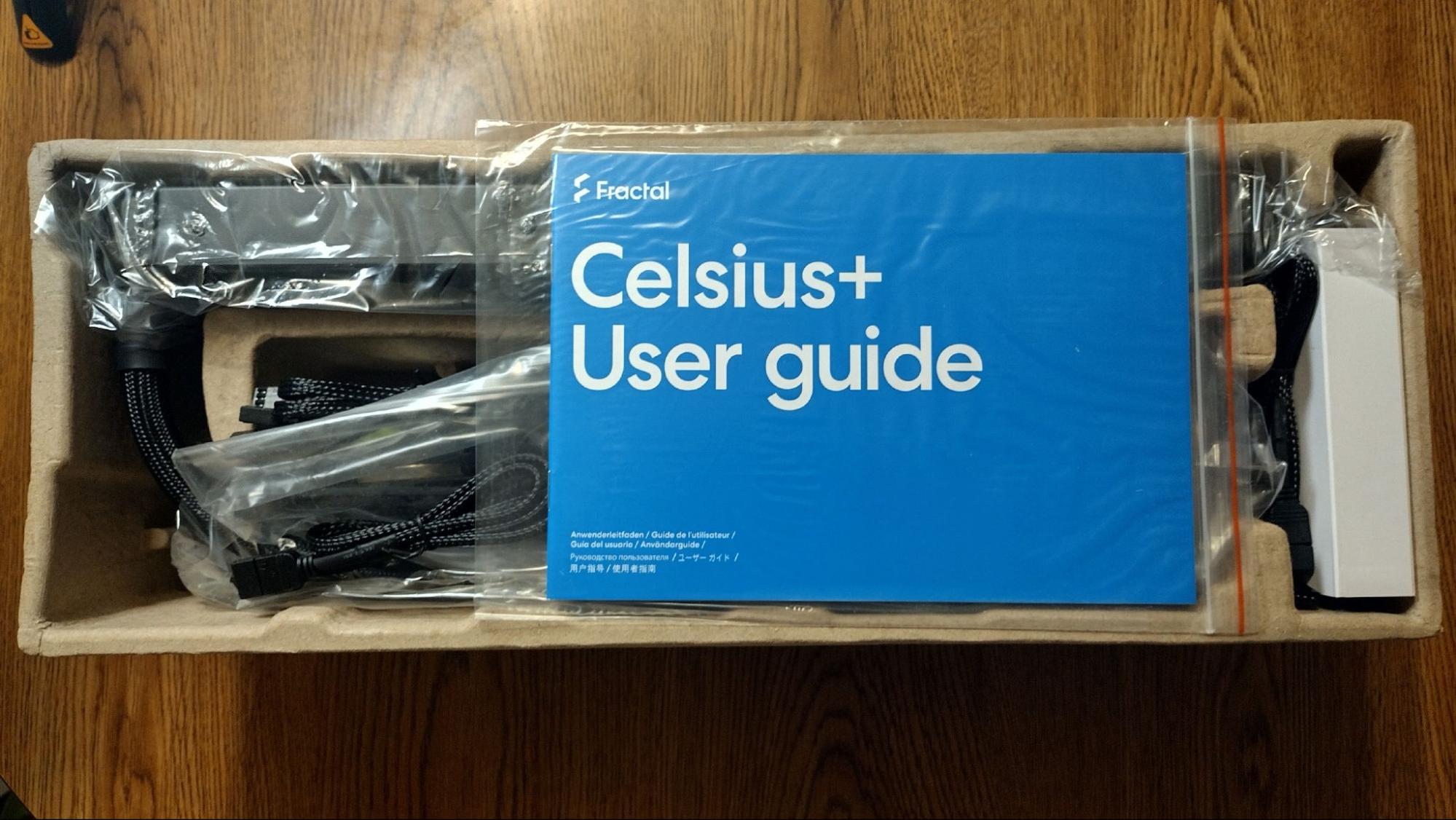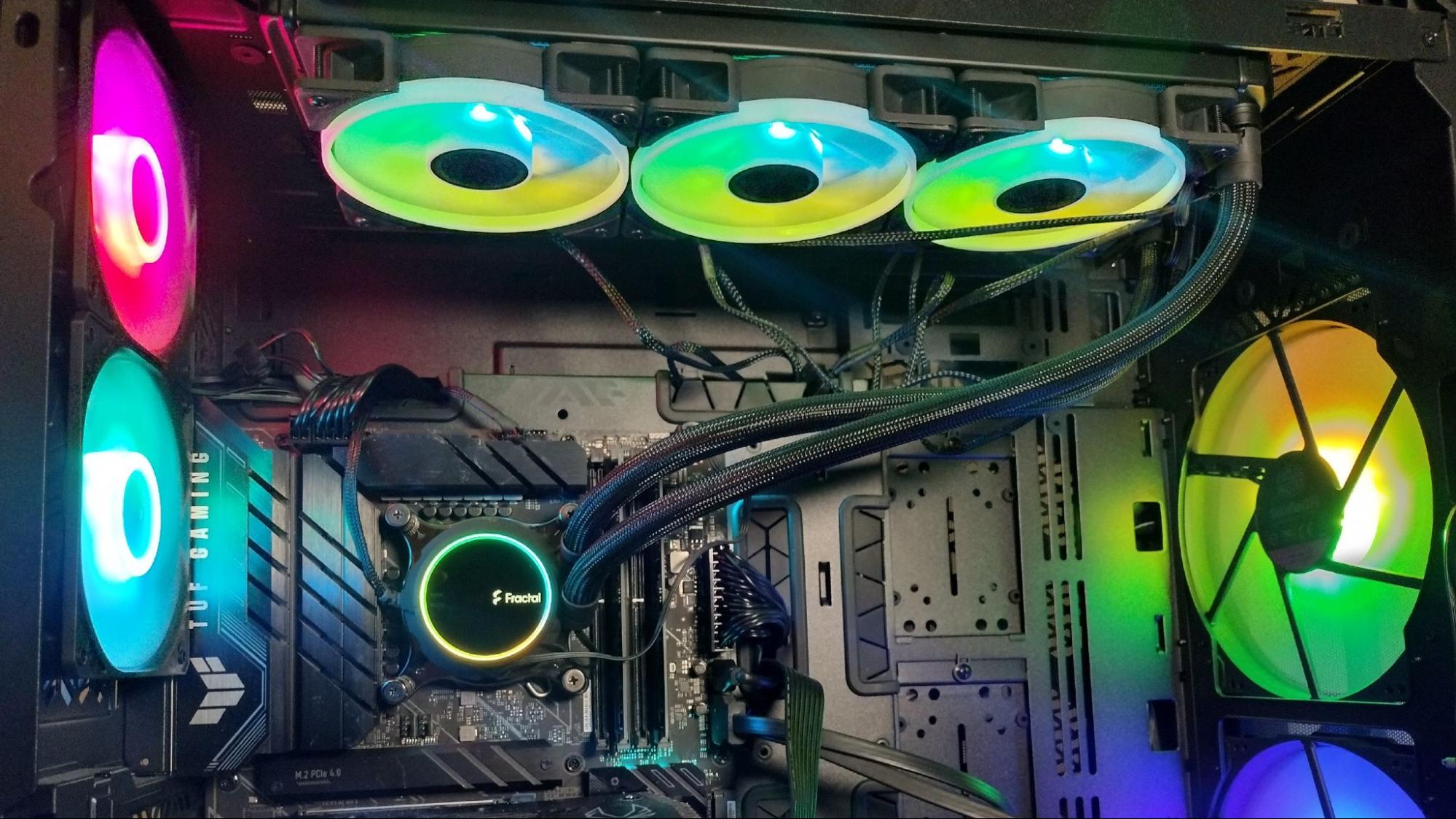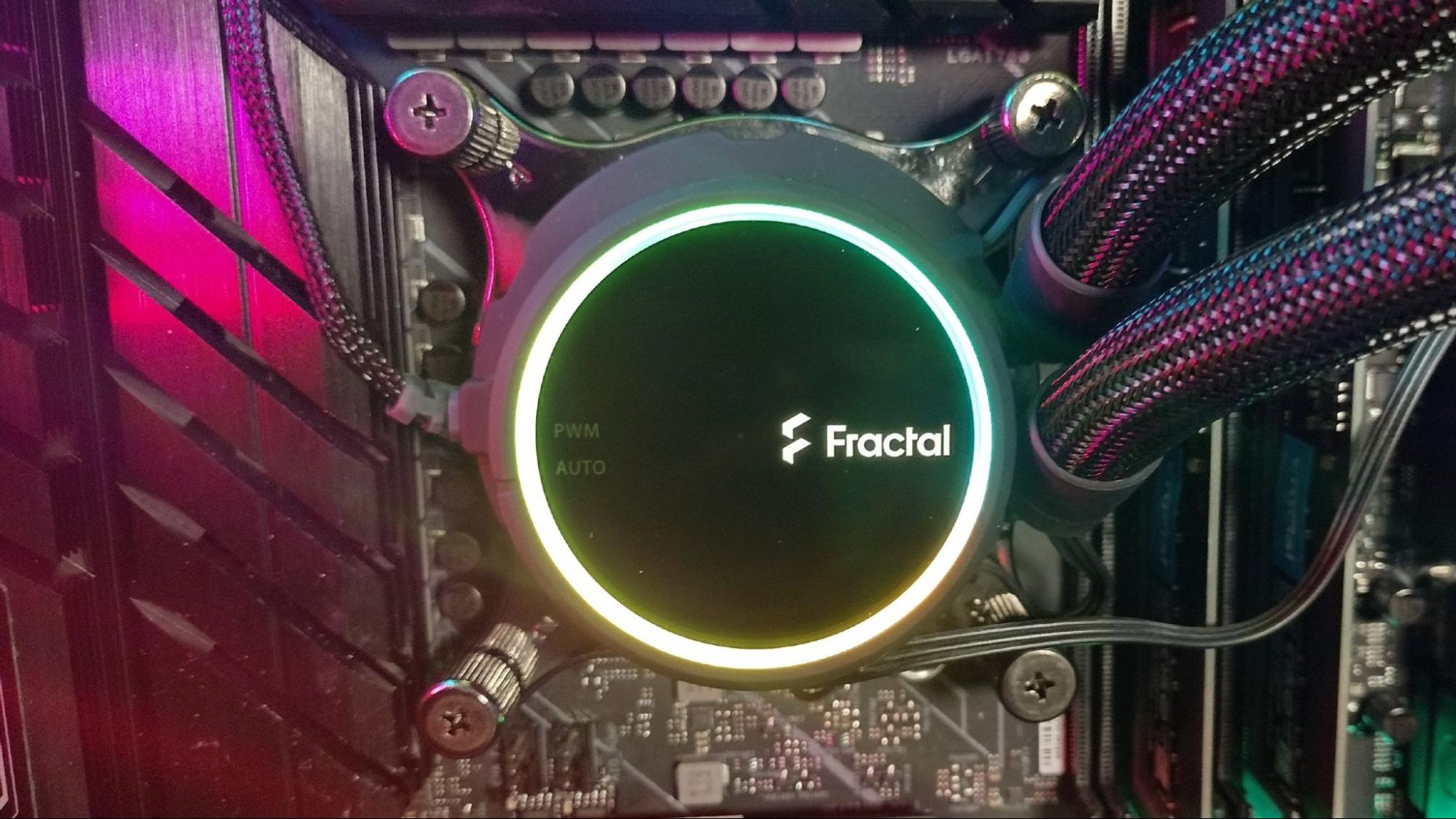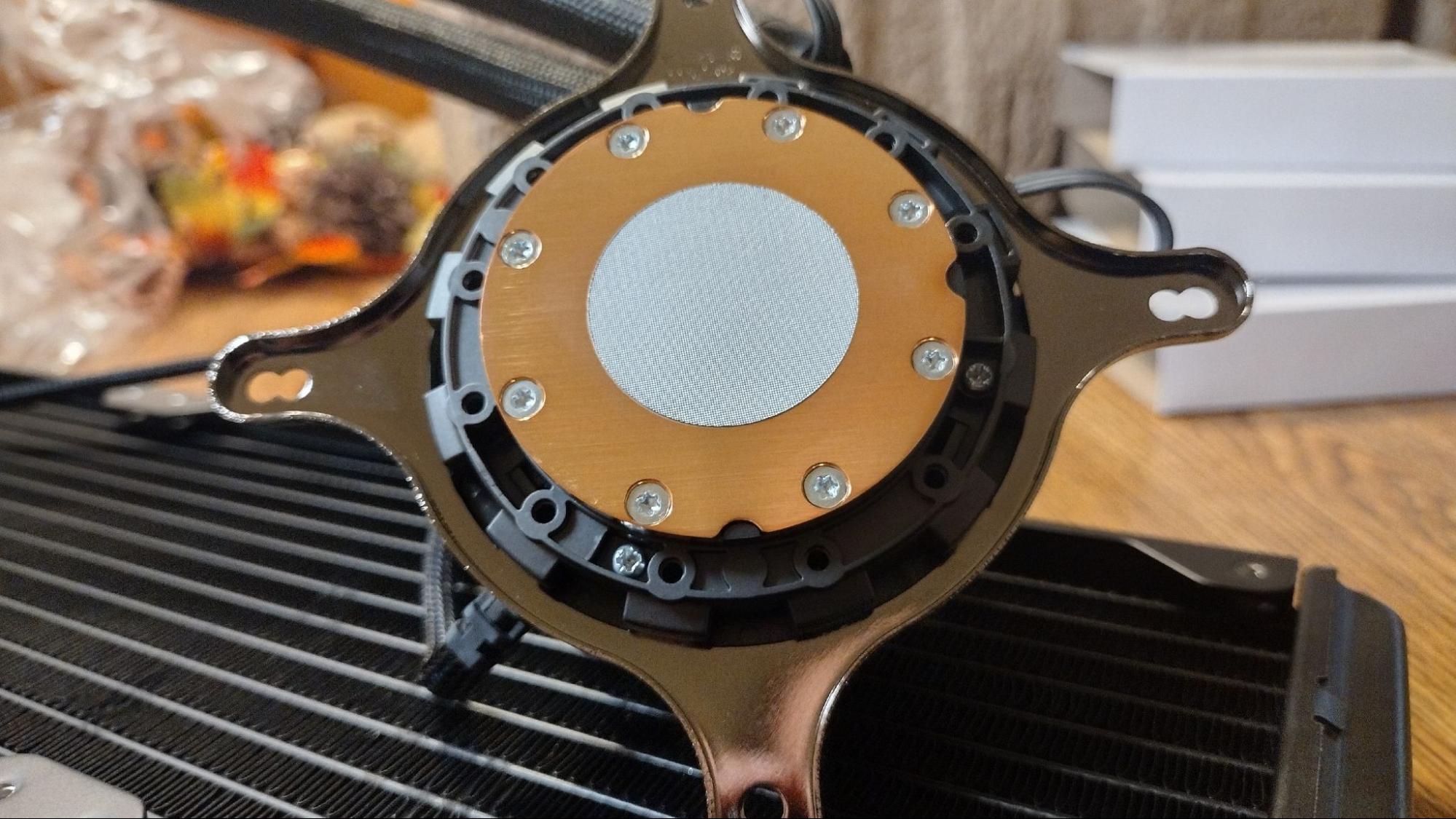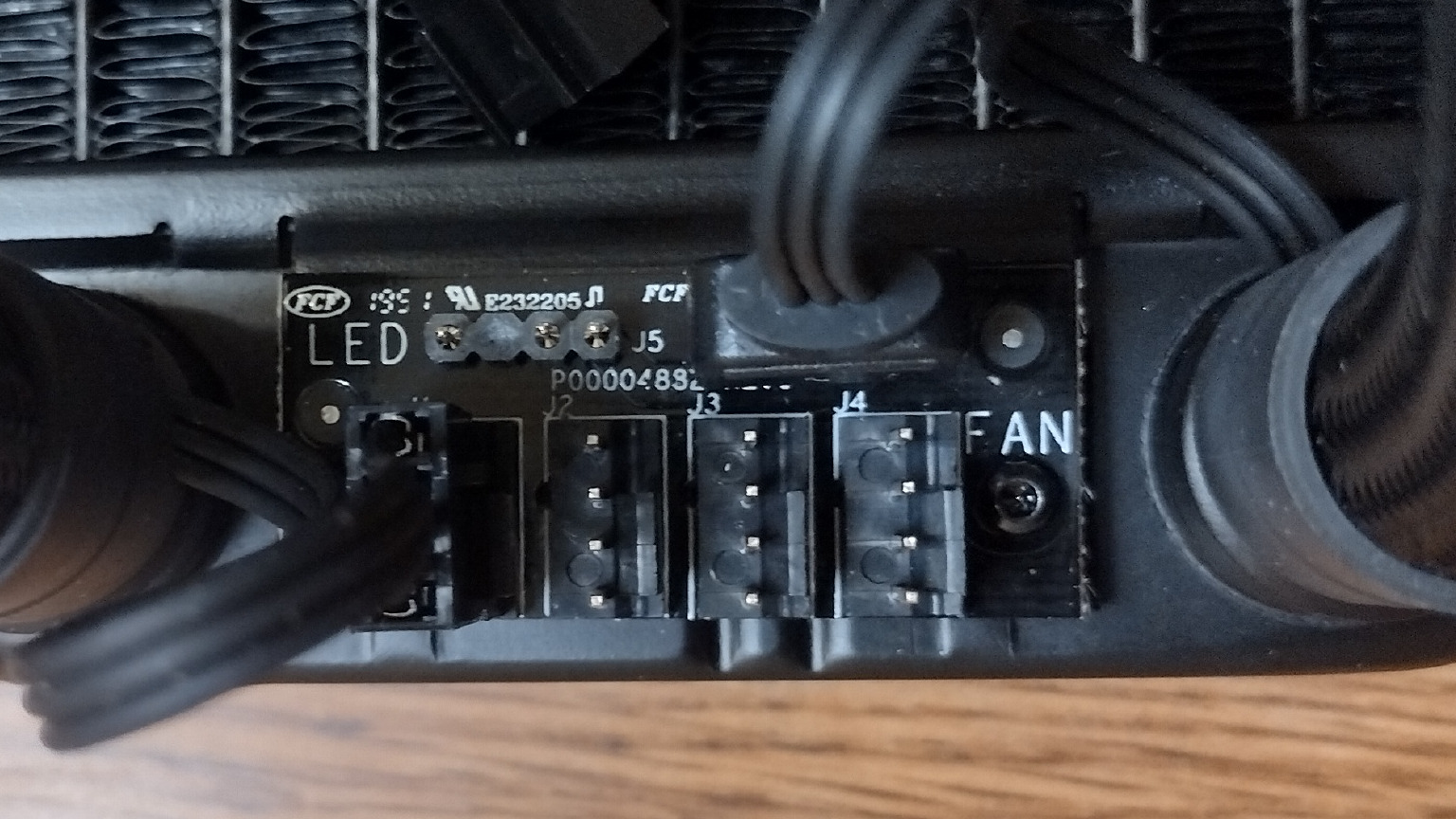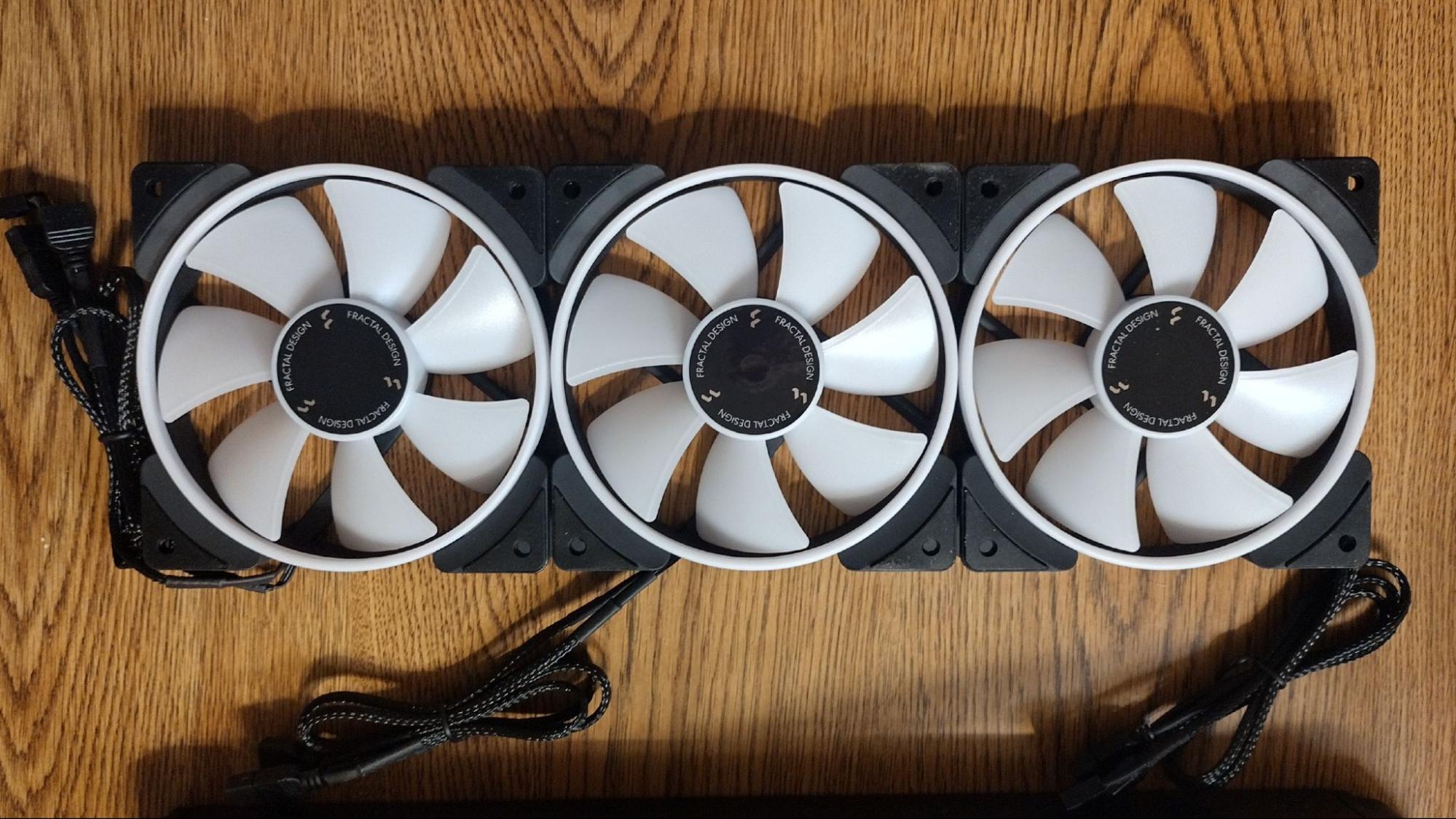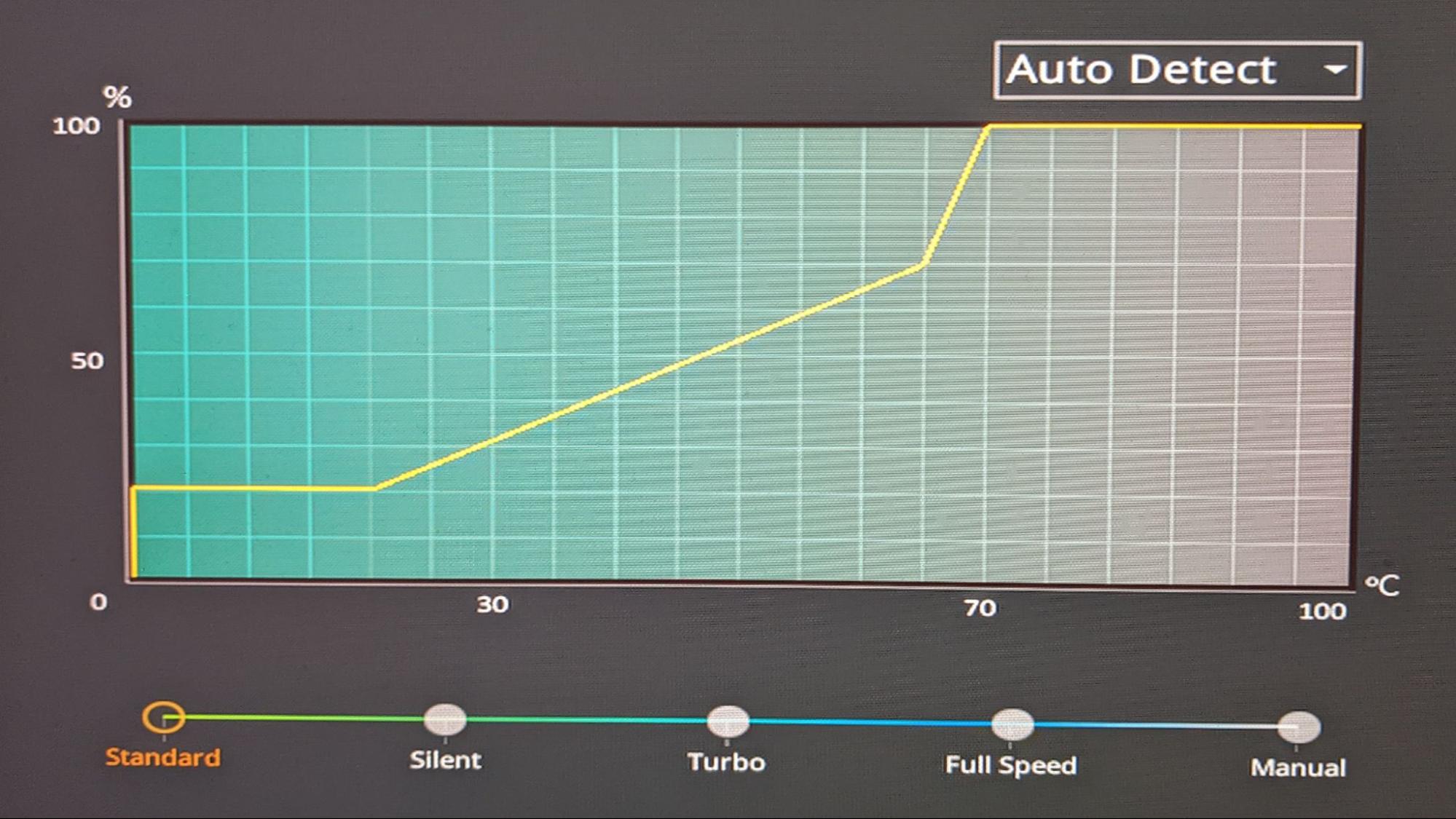Tom's Hardware Verdict
Fractal’s Celsius+ S36 Prisma is the perfect cooler for those who prefer silence, capable of cooling 267W while paired with Intel’s i9-13900K in its quiet mode, and more in PWM mode.
Pros
- +
Handles up to 287W loads with Intel’s i9-13900K in PWM mode
- +
Silent mode is capable of handling around 267W
- +
Quietest cooler I’ve tested yet in loads of 200W and below
- +
Won’t get in the way of tall RAM
Cons
- -
At $199.99, it's more expensive than competing coolers
Why you can trust Tom's Hardware
Swedish company Fractal Design is best known for its computer cases, like our favorite case of 2022, the Fractal North. But the company also makes liquid coolers, case fans, and even power supplies.
We’re looking at Fractal’s Celsius+ S36 Prisma here, one of the company’s strongest all-in-one cooler offerings. The Celsius line of coolers come equipped with an integrated fan and ARGB hub, which allows users to plug the fans directly into the radiator for reduced cable clutter. It features two modes of operation: “Auto” mode which is optimized for silence, and PWM mode for maximum cooling capacity.
With today’s CPUs raising the bar for cooling difficulty, does the Celius+ S36 Prisma have what it takes to cool Intel’s i9-13900K and earn a spot on our best coolers list? We’ll have to put it through testing to say for sure. But first, here are the cooler’s specifications, direct from Fractal.
Cooler Specifications
| Cooler | Fractal Celsius+ S36 Prisma |
| MSRP | $199.99 USD |
| Radiator Dimensions | 123 x 30 x 403 mm |
| Radiator Material | Aluminum |
| Pump Speed | 800-2,800 RPM in normal use, 3,500 RPM during thermal protection mode that activates if liquid temperature is over 60 degrees Celsius |
| Socket Compatibility | Intel: LGA 1700, 1200, 1150, 1151, 1155, 1156, 1366, 2011, 2011-3, 2066 |
| AMD: AM2, AM2+, AM3, AM3+, AM4, AM5, FM1, FM2, FM2+ | |
| Base | Copper |
| Max TDP (Our Testing) | ~303W |
| Warranty | 5 years |
Packing and Included Contents
Fractal’s Celsius+ S36 Prisma comes in a fairly large box that uses plastic coverings and cardboard for protection of the inner contents.
Included with the package are the following:
- 360 mm Radiator
- CPU block
- 3x 120 mm fans
- Mounts for all modern CPU sockets (including AM5 & LGA1700)
- Information, support and installation guides
- Two Clips
- Pre-applied thermal paste
Installation
Installing Fractal’s S36 is mostly simple, but there’s one step that’s very easy to mess up: the fans. One might think installing the fans to be the simplest part of a cooler’s installation, but if you approach the installation of the fans like any other cooler and don’t follow Fractal’s instructions, you’ll end up with one of the cable in an uncomfortable position against one of the other fans.
I’ve seen multiple pictures of people (and even a few reviewers) installing the fans incorrectly, causing the problem seen above. Fractal has designed this AIO to have minimal cable clutter, and as such the installation is a little different.
Get Tom's Hardware's best news and in-depth reviews, straight to your inbox.
While the video below is for the older S36 model, it shows how to properly install the fans on this cooler.
Once the fans have been secured, mount the radiator to the case. Then you’ll press the backplate to the motherboard and then slide on the standoffs to secure the backplate. Afterwards, all that’s left is to press the CPU block against the standoffs and then secure them with the included thumbscrews.
Features of Fractal’s Celsius+ S36
Silent Profile Mode
The Celsius+ has two operational modes, Auto and PWM, which can be selected by teisting the CPU block. Auto mode runs the fans silently at all times. Despite the silent profile of this mode, the Celsius+ S36 was still able to cool an impressive 267W in the Auto mode. That’s more watts cooled in silent mode than most air coolers are capable of handling at full fan speeds!
Full Copper CPU plate
The CPU contact plate on Fractal’s Celsius+ S36 Prisma is made of copper and comes with thermal paste pre-installed.
ARGB and PWM Hub for minimal cable clutter
The Celsius line of coolers come equipped with an integrated fan and ARGB hub, which lets you plug the fans directly into the radiator for reduced cable clutter. The hub is located in between the tubes to the CPU block, on the side of the radiator.
Medium thickness 360 mm radiator
The S36 Prisma features a 360 mm radiator with 30 mm thickness. This isn’t the thickest (or thinnest) radiator we’ve seen, but it should be compatible with most cases that have space for three 120 mm fans.
3x Prisma AL-12 PWM ARGB fans
There’s more to a cooler than just the heatsink or radiator. The bundled fans have a significant impact on cooling and noise levels. Included with the Celsius+ S36 Prisma are 3x Prisma AL-12 PWM ARGB fans. Fractal advertises the following features with these fans:
- Aerodynamic stator struts with embedded wiring reduce noise and turbulence
- Trip Wire technology introduces a micro-turbulent layer for enhanced blade efficiency
- Integrated vibration-damping corners made from high-quality synthetic rubber
- LLS (Long Life Sleeve) bearings provide silent operation with a long lifespan
- Six individually addressable hub-mounted RGB LEDs
- Specifically designed fan blades and outer ring produce a uniform glow
| Model | Prisma AL-12 PWM ARGB |
| Dimensions | 120 x 120 x 25 mm |
| Fan Speed | 500 - 2,000 RPM |
| Air Flow | Up to 85.71 CFM |
| Air Pressure | 2.78 mm H2O |
| Bearing Type | Long Life Sleeve |
| Lighting | ARGB |
Testing Methodology
While it was fairly easy with previous generations of CPUs for coolers to keep the flagship i9 processor well under TJ max (the maximum temperature a CPU can sustain without throttling) in tough workloads, this is no longer realistically possible on current generation CPUs (and the 13900K especially) without extreme cooling (or enabling power limits).
While in the past a CPU hitting its peak temperature was cause for concern, enthusiasts are going to have to learn to accept high temperatures as “normal” while running demanding workloads with Raptor Lake and Ryzen 7000 CPUs. Modern AMD and Intel CPUs are designed to run fairly hot without any problems – up to 95 degrees Celsius and for AMD Ryzen 7000 CPUs, and up to 100 C for Intel’s Core i9-13900K. Similar behavior has been standard in laptops for years due to cooling limitations in tight spaces.
Furthermore, Intel’s Core i9-13900K supports Adaptive Boost Technology (ABT) which allows Core i9 processors to dynamically boost to higher all-core frequencies based on available thermal headroom and electrical conditions. This allows multi-core loads to operate at up to 5.5ghz if the necessary amount of thermal dissipation is there. This feature works in a way that actively seeks high temperatures: If the chip sees that it is running underneath the 100-degree C threshold, it will increase its performance and power consumption until it reaches the safe 100 C limit, thus sustaining higher clocks (and providing better performance) for longer periods.
The increased cooling challenges posed by Raptor Lake mean that we’ve had to change some of the ways we test coolers. Some coolers were able to pass Cinebench R23 multicore testing with Intel’s 12th Gen i9-12900K when power limits were removed (although only the strongest models were able to pass that test). Most liquid coolers and all air coolers I’ve tested “failed” that test because the CPU reached TJ max in this scenario.
With Raptor Lake’s 13900K, not a single cooler tested has been able to keep the CPU under TJ max in this test – because as we pointed out, the chip is designed to dial up performance and power until it richest that thermal result. We’ll compare performance instead by looking at total benchmark scores and clock speeds maintained.
I’ll be testing Intel’s i9-13900K CPU using Asus’ TUF Gaming Z690 Gaming Plus WIFI motherboard and Cooler Master’s HAF 700 Berserker computer case, with case fans limited to 35% speeds. The motherboard’s default fan curve is used for the CPU Cooler’s fans.
In addition to testing Cinebench without power limits enforced, we’ll also be showing results when the CPU’s power consumption is limited to a more reasonable 200W. We’ll also show results at 125W for those who prefer whisper-quiet cooling, at the cost of some performance. For both of these results, we’ll show traditional delta over ambient temperature results.
We’ll provide noise level measurements recorded using a PSPL25 Sound Meter for all three power levels tested to compare how much noise each cooler makes in different scenarios. We expect most coolers to run effectively silently at 125W.
LGA1700 Socket Bending
Note there are many factors other than the CPU cooler that can influence your cooling performance, including the case you use and the fans installed in it. A system's motherboard can also influence this, especially if it suffers from bending, which results in poor cooler contact with the CPU.
In order to prevent bending from impacting our cooling results, we’ve installed Thermalright’s LGA 1700 contact frame into our testing rig. If your motherboard is affected by bending, your thermal results will be worse than those shown below. Not all motherboards are affected equally by this issue. I tested Raptor Lake CPUs in two motherboards. And while one of them showed significant thermal improvements after installing Thermalright’s LGA1700 contact frame, the other motherboard showed no difference in temperatures whatsoever! Check out our review of the contact frame for more information.
Testing Configuration
| CPU | Intel Core i9-13900K |
| Comparison Air Coolers Tested | Cougar Forza 50 |
| DeepCool AG400 | |
| DeepCool AG620 | |
| Iceberg Thermal IceSLEET G6 Stealth | |
| SilverStone Hydrogon D120 ARGB | |
| Thermalright Assassin X 120 R SE | |
| Thermalright AXP120-X67 | |
| Comparison AIO Coolers Tested | Arctic Liquid Freezer II 360 |
| DeepCool LT720 | |
| Enermax AquaFusion ADV 360 | |
| Fractal Celsius+ S36 Prisma | |
| MSI MAG CoreLiquid P360 | |
| SilverStone VIDA 240 Slim | |
| Motherboard | Asus TUF Gaming Z690 Plus Wifi DDR5 |
| RAM | Crucial DDR5-4800 |
| GPU | Intel ARC A770 LE |
| Case | Cooler Master HAF 700 Berserker |
| PSU | Cooler Master XG Plus 850 Platinum PSU |
- MORE: Best CPUs for Gaming
- MORE: How to Overclock a CPU
- MORE: How to check CPU Temperature

Albert Thomas is a contributor for Tom’s Hardware, primarily covering CPU cooling reviews.
